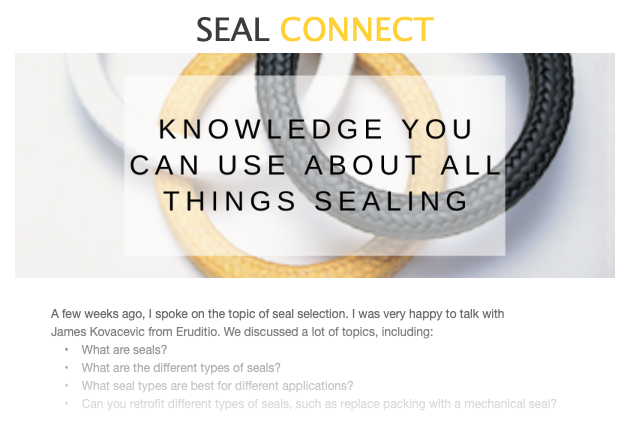Conche Sealing and Air Sealing Technology Helps Chocolate Manufacturer Eliminate Product Leakage
Fluid sealing and reliability is vital to effective and safe manufacturing, especially for the food and beverage industry where effective chocolate sealing is crucial.
However, chocolate conches are difficult to seal. The resulting leakage causes:
- Product loss
- Housekeeping issues
- A challenging and potentially unsafe work environment
- Many more time-consuming problems

According to an article on CandyIndustry.com, one Midwest chocolate facility experienced $2 million in losses alone. The quantity of chocolate that leaked onto the floor filled multiple waste barrels.
This plant depended on the traditional methods for sealing conches and other less-specialized mixers — compression packing or mechanical seals. While these are effective in many applications, they have not solved the problem of leaking conches.
Why Do Conche Seals Fail?
According to the publication, the shaft movement on conches, specialized mixers used in chocolate refining, opens clearances between the shaft and the packing. If mechanical seals are used, the shaft movement damages these seals’ faces. This alone leads to instant leakage.
Even without shaft movement, the inevitable shaft wear over time remains.
“As wear occurs, leakage increases, accelerating required maintenance. All of this leads to an ongoing cycle of product loss, maintenance and seal replacement.”
A Chocolate Sealing Solution
According to the Candy Industry article, an air seal solved the conche-sealing dilemma experienced by the Midwest chocolate producer.
An air seal is a noncontact seal that uses air to form a pressurized barrier between the product and the environment. Air is delivered to the seal. This air is fed through a tight-clearance throttle to create this barrier. Additionally, this throttle handles shaft runout while maintaining the pressurized barrier and without wearing the shaft.
“No [flushing or] maintenance is required [with an air seal],” the article explains. “Its design allows for the technology to seal 100% of the product and to last for the life of the asset.”
How an Air Seal Solved this Conche-Sealing Dilemma
As a result of its partnership with a team of seal experts and the installation of the air seal technology, the Midwest plant’s waste, housekeeping issues, and potential safety issues were eliminated.
“Adding air sealing technology to chocolate conches allows end users to experience a dramatic reduction in operational costs and the mitigation of maintenance, repair, and clean up,” the article explains, “Perhaps even more important, costly product loss is eliminated.”
Read the full article on CandyIndustry.com to learn more about how an air seal and proper conch sealing techniques helped this Midwestern chocolate factory solve its slew of issues related to product loss, as well as their plans to build on their seal reliability program.
 SEAL CONNECT
SEAL CONNECT
 Find Your Sealing Solution
Find Your Sealing Solution